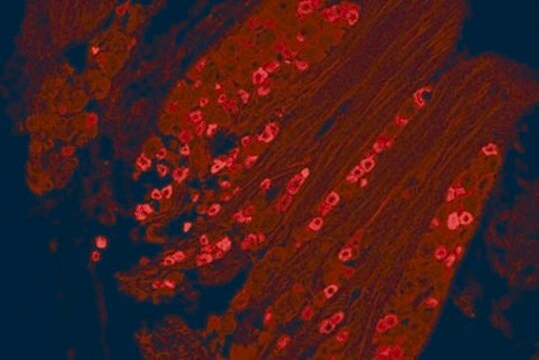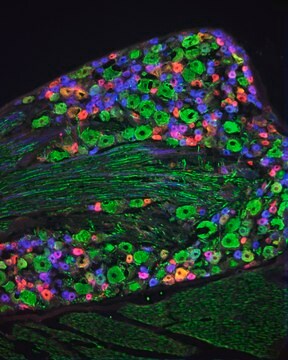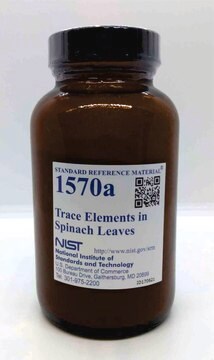MAB5262
Anti-Neurofilament 200 kDa Antibody, clone RT97
clone RT97, Chemicon®, from mouse
Sinónimos:
Anti-CMT2CC, Anti-NFH
About This Item
Productos recomendados
origen biológico
mouse
Nivel de calidad
forma del anticuerpo
purified immunoglobulin
tipo de anticuerpo
primary antibodies
clon
RT97, monoclonal
reactividad de especies
mouse, human
reactividad de especies (predicha por homología)
rat
fabricante / nombre comercial
Chemicon®
técnicas
immunohistochemistry (formalin-fixed, paraffin-embedded sections): suitable
western blot: suitable
isotipo
IgG1
Nº de acceso NCBI
Nº de acceso UniProt
Condiciones de envío
wet ice
modificación del objetivo postraduccional
unmodified
Información sobre el gen
human ... NEFH(4744)
mouse ... Nefh(380684)
rat ... Nefh(24587)
Descripción general
Especificidad
Inmunógeno
Aplicación
1-10 μg/mL
Immunohistochemistry(paraffin):
Representative images from a previous lot.
Optimal Staining With Citrate Buffer, pH 6.0, Epitope Retrieval: Human Cerebellum
Optimal working dilutions must be determined by end user.
Neuroscience
Neurofilament & Neuron Metabolism
Neuronal & Glial Markers
Calidad
Western Blotting Analysis:
1:500 dilution of this antibody detected NEUROFILAMENT on 10 µg of Mouse brain membrane lysates.
Descripción de destino
Forma física
Almacenamiento y estabilidad
Nota de análisis
Brain
Cultured neurons
Otras notas
Información legal
Cláusula de descargo de responsabilidad
¿No encuentra el producto adecuado?
Pruebe nuestro Herramienta de selección de productos.
Opcional
Código de clase de almacenamiento
10 - Combustible liquids
Clase de riesgo para el agua (WGK)
WGK 2
Punto de inflamabilidad (°F)
Not applicable
Punto de inflamabilidad (°C)
Not applicable
Certificados de análisis (COA)
Busque Certificados de análisis (COA) introduciendo el número de lote del producto. Los números de lote se encuentran en la etiqueta del producto después de las palabras «Lot» o «Batch»
¿Ya tiene este producto?
Encuentre la documentación para los productos que ha comprado recientemente en la Biblioteca de documentos.
Nuestro equipo de científicos tiene experiencia en todas las áreas de investigación: Ciencias de la vida, Ciencia de los materiales, Síntesis química, Cromatografía, Analítica y muchas otras.
Póngase en contacto con el Servicio técnico







